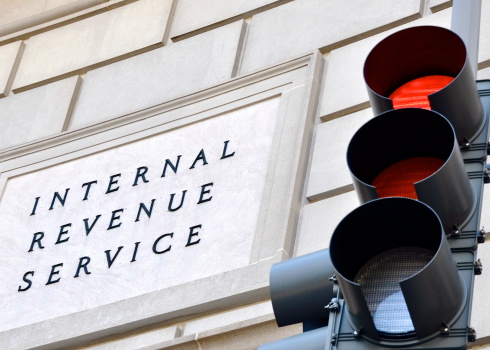
by admin | Sep 7, 2021 | Hot Topics, Human Resources, IRS
Employers, have you reminded your employees to check that they are having the right amount of tax withheld from their paychecks? It’s a good idea for everyone to check their payroll withholding every year, but it is particularly important this year due to the many proposed tax changes.
The law’s changes do not affect every taxpayer the same way. Some workers may need to increase their withholding so they will not face a tax bill —and possible penalties — next April when their 2021 tax return is due. Many other workers, however, benefit from the law’s changes and can take home more pay because the withholding amounts are less.
Help your employees avoid being surprised next spring when they prepare their 2021 returns. Remind them now to check their year-to-date withholding so they can make adjustments, if appropriate, on their paychecks for the rest of this year. It’s easy and convenient using tools provided by the IRS.
Here is a sample message to employees:
The IRS encourages everyone to use the Withholding Calculator to perform a quick “paycheck checkup.” This is even more important this year because of recent changes to the tax law for 2021.
The Calculator helps you identify your tax withholding to make sure you have the right amount of tax withheld from your paycheck at work. Use the Calculator to see if you should give your employer a new Form W-4, Employee’s Withholding Allowance Certificate, to adjust your income tax withholding going forward.
To get started, gather your most recent pay stubs and a copy of your last federal tax return (2020 Form 1040). You’ll use the information to estimate your 2021 income and taxes.
The Withholding Calculator does not ask you to provide sensitive personally-identifiable information like your name, Social Security number, address, or bank account numbers. The IRS does not save or record the information you enter on the Calculator.
Ready to start? Make sure Javascript is enabled and go to: Withholding Calculator
by Kathleen Berger
Originally posted on thinkhr.com
by admin | Nov 14, 2018 | Compliance, Hot Topics
The Department of the Treasury (Treasury), Department of Labor (DOL), and Department of Health and Human Services (HHS) (collectively, the Departments) released their proposed rule regarding health reimbursement arrangements (HRAs) and other account-based group health plans. The DOL also issued a news release and fact sheet on the proposed rule.
The proposed rule’s goal is to expand the flexibility and use of HRAs to provide individuals with additional options to obtain quality, affordable healthcare. According to the Departments, these changes will facilitate a more efficient healthcare system by increasing employees’ consumer choice and promoting healthcare market competition by adding employer options.
To do so, the proposed rules would expand the use of HRAs by:
- Removing the current prohibition against integrating an HRA with individual health insurance coverage (individual coverage)
- Expanding the definition of limited excepted benefits to recognize certain HRAs as limited excepted benefits if certain conditions are met (excepted benefit HRA)
- Providing premium tax credit (PTC) eligibility rules for people who are offered an HRA integrated with individual coverage
- Assuring HRA and Qualified Small Employer Health Reimbursement Arrangement (QSEHRA) plan sponsors that reimbursement of individual coverage by the HRA or QSEHRA does not become part of an ERISA plan when certain conditions are met
- Changing individual market special enrollment periods for individuals who gain access to HRAs integrated with individual coverage or who are provided QSEHRAs
Public comments are due by December 28, 2018. If the proposed rule is finalized, it will be effective for plan years beginning on or after January 1, 2020.
by Karen Hsu
Originally posted on ubabenefits.com

by admin | Nov 7, 2018 | ACA, Compliance, Human Resources, IRS
 On November 5, 2018, the Internal Revenue Service (IRS) released Notice 2018-85 to announce that the health plan Patient-Centered Outcomes Research Institute (PCORI) fee for plan years ending between October 1, 2018 and September 30, 2019 will be $2.45 per plan participant. This is an increase from the prior year’s fee of $2.39 due to an inflation adjustment.
On November 5, 2018, the Internal Revenue Service (IRS) released Notice 2018-85 to announce that the health plan Patient-Centered Outcomes Research Institute (PCORI) fee for plan years ending between October 1, 2018 and September 30, 2019 will be $2.45 per plan participant. This is an increase from the prior year’s fee of $2.39 due to an inflation adjustment.
Background
The Affordable Care Act created the PCORI to study clinical effectiveness and health outcomes. To finance the nonprofit institute’s work, a small annual fee — commonly called the PCORI fee — is charged on group health plans.
The fee is an annual amount multiplied by the number of plan participants. The dollar amount of the fee is based on the ending date of the plan year. For instance:
- For plan year ending between October 1, 2017 and September 30, 2018: $2.39.
- For plan year ending between October 1, 2018 and September 30, 2019: $2.45.
Insurers are responsible for calculating and paying the fee for insured plans. For self-funded health plans, however, the employer sponsor is responsible for calculating and paying the fee. Payment is due by filing Form 720 by July 31 following the end of the calendar year in which the health plan year ends. For example, if the group health plan year ends December 31, 2018, Form 720 must be filed along with payment no later than July 31, 2019.
Certain types of health plans are exempt from the fee, such as:
- Stand-alone dental and/or vision plans;
- Employee assistance, disease management, and wellness programs that do not provide significant medical care benefits;
- Stop-loss insurance policies; and
- Health savings accounts (HSAs).
HRAs and QSEHRAs
A traditional health reimbursement arrangement (HRA) is exempt from the PCORI fee, provided that it is integrated with another self-funded health plan sponsored by the same employer. In that case, the employer pays the PCORI fee with respect to its self-funded plan, but does not pay again just for the HRA component. If, however, the HRA is integrated with a group insurance health plan, the insurer will pay the PCORI fee with respect to the insured coverage and the employer pays the fee for the HRA component.
A qualified small employer health reimbursement arrangement (QSEHRA) works a little differently. A QSEHRA is a special type of tax-preferred arrangement that can only be offered by small employers (generally those with fewer than 50 employees) that do not offer any other health plan to their workers. Since the QSEHRA is not integrated with another plan, the PCORI fee applies to the QSEHRA. Small employers that sponsor a QSEHRA are responsible for reporting and paying the PCORI fee.
PCORI Nears its End
The PCORI program will sunset in 2019. The last payment will apply to plan years that end by September 30, 2019 and that payment will be due in July 2020. There will not be any PCORI fee for plan years that end on October 1, 2019 or later.
Resources
The IRS provides the following guidance to help plan sponsors calculate, report, and pay the PCORI fee:
Originally posted on thinkhr.com

by admin | Oct 30, 2018 | Benefit Management, Employee Benefits, Flexible Spending Accounts, Group Benefit Plans
 Trying to decide which of the many employer-sponsored benefits out there to offer employees can leave an employer feeling lost in a confusing bowl of alphabet soup—HSA? FSA? DCAP? HRA? What does it mean if a benefit is “limited” or “post-deductible”? Which one is use-it-or-lose-it? Which one has a rollover? What are the limits on each benefit?—and so on.
Trying to decide which of the many employer-sponsored benefits out there to offer employees can leave an employer feeling lost in a confusing bowl of alphabet soup—HSA? FSA? DCAP? HRA? What does it mean if a benefit is “limited” or “post-deductible”? Which one is use-it-or-lose-it? Which one has a rollover? What are the limits on each benefit?—and so on.
While there are many details to cover for each of these benefit options, perhaps the first and most important question to answer is: which of these benefits is going to best suit the needs of both my business and my employees? In this article, we will cover the basic pros and cons of Flexible Spending Arrangements (FSA), Health Savings Accounts (HSA), and Health Reimbursement Arrangements (HRA) to help you better answer that question.
Flexible Spending Arrangements (FSA)
An FSA is an employer-sponsored and employer-owned benefit that allows employee participants to be reimbursed for certain expenses with amounts deducted from their salaries pre-tax. An FSA can include both the Health FSA that reimburses uncovered medical expenses and the Dependent Care FSA that reimburses for dependent expenses like day care and child care.
Pros:
- Benefits can be funded entirely from employee salary reductions (ER contributions are an option)
- Participants have access to full annual elections on day 1 of the benefit (Health FSA only)
- Participants save on taxes by reducing their taxable income; employers save also by paying less in payroll taxes like FICA and FUTA
- An FSA allows participants to “give themselves a raise” by reducing the taxes on healthcare expenses they would have had anyway
Cons:
- Employers risk losing money should an employee quit or leave the program prior to fully funding their FSA election
- Employees risk losing money should their healthcare expenses total less than their election (the infamous use-it-or-lose-it—though there are ways to mitigate this problem, such as the $500 rollover option)
- FSA elections are irrevocable after open enrollment; only a qualifying change of status event permits a change of election mid-year
- Only so much can be elected for an FSA. For 2018, Health FSAs are capped at $2,650, and Dependent Care Accounts are generally capped at $5,000
- FSA plans are almost always offered under a cafeteria plan; as such, they are subject to several non-discrimination rules and tests
Health Savings Accounts (HSA)
An HSA is an employee-owned account that allows participants to set aside funds to pay for the same expenses that are eligible under a Health FSA. Also like an FSA, these accounts can be offered under a cafeteria plan so that participants may fund their accounts through pre-tax salary reductions.
Pros:
- HSAs are “triple-tax advantaged”—the contributions are tax free, the funds are not taxed if paid for eligible expenses, and any gains on the funds (interest, dividends) are also tax-free
- HSAs are portable, employee-owned, interest-bearing bank accounts; the account remains with the employees even if they leave the company
- Certain HSAs allow participants to invest a portion of the balance into mutual funds; any earnings on these investments are non-taxable
- Upon reaching retirement, participants can use any remaining HSA funds to pay for any expense without a tax penalty (though normal taxes are required for non-qualified expenses); also, retirees can use the funds tax-free to pay premiums on any supplemental Medicare coverage. This feature allows HSAs to operate as a secondary retirement fund
- There is no use-it-or-lose-it with HSAs; all funds employees contribute stay in their accounts and remain theirs in perpetuity. Also, participants may alter their deduction amounts at any time
- Like FSAs, employers can either allow the HSA to be entirely employee-funded, or they may choose to also make contributions to their employees’ HSA accounts
- Even though they are often offered under a cafeteria plan, HSAs do not carry the same non-discrimination requirements as an FSA. Moreover, there is less administrative burden for the employer as the employees carry the liability for their own accounts
Cons:
- To open and contribute to an HSA, an employee must be covered by a qualifying high deductible health plan; moreover, they cannot be covered by any other health coverage (a spouse’s health insurance, an FSA (unless limited), or otherwise)
- Participants are limited to reimburse only what they have contributed—there is no “front-loading” like with an FSA
- Participant contributions to an HSA also have an annual limit. For 2018, that limit is $3,450 for an employee with single coverage and $6,900 for an employee with family coverage (participants over 55 can add an additional $1,000; also, remember there is no total account limit)
- Participation in an HSA precludes participation in any other benefit that provides health coverage. This means employees with an HSA cannot participate in either an FSA or an HRA. Employers can work around this by offering a special limited FSA or HRA that only reimburses dental and vision benefits, meets certain deductible requirements, or both
- HSAs are treated as bank accounts for legal purposes, so they are subject to many of the same laws that govern bank accounts, like the Patriot Act. Participants are often required to verify their identity to open an HSA, an administrative burden that does not apply to either an FSA or an HRA
Health Reimbursement Arrangements (HRA)
An HRA is an employer-owned and employer-sponsored account that, unlike FSAs and HSAs, is completely funded with employer monies. Employers can think of these accounts as their own supplemental health plans that they create for their employees
Pros:
- HRAs are extremely flexible in terms of design and function; employers can essentially create the benefit to reimburse the specific expenses at the specific time and under the specific conditions that the employers want
- HRAs can be an excellent way to “soften the blow” of an increase in major medical insurance costs—employers can use an HRA to mitigate an increase in premiums, deductibles, or other out-of-pocket expenses
- HRAs can be simpler to administer than an FSA or even an HSA, provided that the plan design is simple and efficient: there are no payroll deductions to track, usually less reimbursements to process, and no individual participant elections to manage
- Small employers may qualify for a special type of HRA, a Qualified Small Employer HRA (or QSEHRA), that even allows participants to be reimbursed for their insurance premiums (special regulations apply)
- Funds can remain with the employer if someone terminates employment and have not submitted for reimbursement
Cons:
- HRAs are entirely employer funded. No employee funds or salary reductions may be used to help pay for the benefit. Some employers may not have the funding to operate such a benefit
- HRAs are subject to the Affordable Care Act. As such, they must be “integrated” with major medical coverage if they provide any sort of health expense reimbursement and are also subject to several regulations
- HRAs are also subject to many of the same non-discrimination requirements as the Health FSA
- HRAs often go under-utilized; employers may pay an amount of administrative costs that is disproportionate to how much employees actually use the benefit
- Employers can often get “stuck in the weeds” with an overly complicated HRA plan design. Such designs create frustration on the part of the participants, the benefits administrator, and the employer
For help in determining which flexible benefit is right for your business, contact us!
by Blake London
Originally posted on ubabenefits.com
by admin | Oct 24, 2018 | Human Resources, Work From Home, Workplace
In a tight labor market, a candidate’s potential commute can make a job more or less attractive. HumanResources reports that a quarter of employees surveyed had left a job because of the commute. When looking at just Millennials, the number jumps to one third. Employees can be choosy, selecting a job that offers more of what they want, and that means less of a commute. Companies can work around this by offering transportation amenities, flexible scheduling or more remote working opportunities.
Forbes has a recent interview with Tamara Littleton, founder of The Social Element, who’s successfully built a remote team at the social media management agency. She argues culture starts at the top. By treating people well, which includes offering remote opportunities, it sets a tone for the whole company. Creating opportunities for in-person meetings and gatherings balance any isolation that may happen. Then, more regular face-to-face communication, essential to build trust and teamwork, comes via video calls when email might otherwise be the default. Newsletters and webinars keep the team connected and ensure important messages aren’t missed. She can point to the success of her ideas with the hire of many senior team members, willing to sacrifice some pay for more flexibility.
When implementing remote-friendly strategies, there are plenty of success stories to draw inspiration. Entrepreneur has some tips from Zapier, a company that has been on the forefront of offering alternative working arrangements. In fact, they offer a “de-location” package to encourage employees to move from the cost-prohibitive Bay Area. Tools like Slack facilitate real-time communication, with tools to find ideal meeting times across time zones and channels themed for non-work related conversations. Bots regularly and randomly pair up employees to get a chance to know one another during a brief call. A semi-regular retreat brings people together in person and impromptu video dance parties make slow days more fun.
The takeaway? Being proactive and creative to build remote work policies can get you the employees you want, wherever they may be.
HumanResources
Travelling to and fro office may drive your employees to quit
https://www.humanresourcesonline.net/travelling-to-and-fro-office-may-drive-your-employees-to-quit/
Forbes
How To Build A Culture Of Trust In A Large Remote Team
https://www.forbes.com/sites/brettonputter/2018/10/04/how-to-build-a-culture-of-trust-in-a-large-remote-team/#5d4e5d23188c
Entrepreneur
This Company Hosts Virtual Dance Parties to Help Its 170 Remote Employees Feel Connected
https://www.entrepreneur.com/article/320411
by Bill Olson
Originally posted on ubabenefits.com




